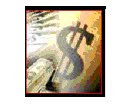As the market appeared to gradually recover from the S&P downgrade of US Debt, there was still a sense that institutions and investors were pausing for a sign that the economy is on solid footing. There were those sitting on the sidelines like sharks waiting for a discount buying opportunity, but for the most part, fear had taken hold on investors. This is clearly reflected in the trading shifts that can be seen just by looking at rising gold prices.
The financial crisis which has had a death grip on US economy, has not been kind to Europe either. This is extremely unusual time where financial markets are concerned. Historically investors and institutions would diversify their portfolios by spreading the risk between stocks, bonds and European securities or foreign currency.
The wisdom of this strategy is simply this: when stocks are not doing so well, the bond yields and overseas securities and currency trades, would mitigate the overall portfolio losses. This is precisely why the mantra for investing has been to diversify. Remember the devastated employees of Enron, and WorldCom who had enjoyed fat portfolios values in the millions. These unsuspecting employee/shareholders swiftly went from being millionaires to being completely broke. Why, because they had only one stock in their portfolio -no other stocks, government bonds, or foreign investments to offset the plunging Enron stock - which ultimately became worthless. Traditionally portfolio managers would use government treasuries and bonds, along with foreign investments as safe havens.
Given the sluggish U.S. economy and S&P downgrade, the overseas market would normally serve as safe havens. However, the coninuing rash of bailouts overseas eliminates the prospects of a safe place to invest, while awaiting economic stability in the U.S.
Back to Home Page
K Reilly
Cohn-Reilly Report
Friday, August 12, 2011
Subscribe to:
Post Comments (Atom)



















No comments:
Post a Comment